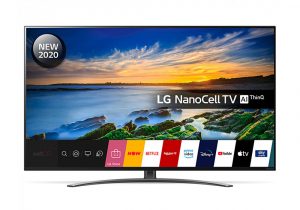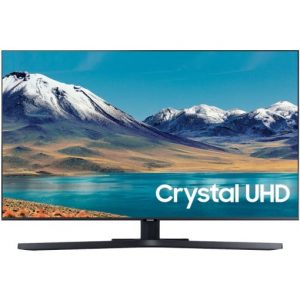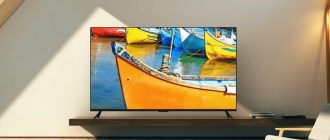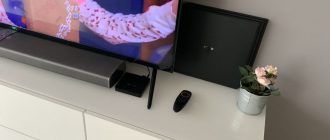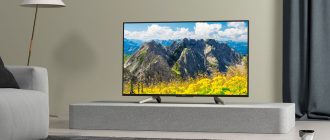We tried to find the best smart TV for 2020 and 2021. The main thing to remember is that there is no perfect TV. You have to sacrifice something. Some models with very good picture, high contrast and brightness (eg OLED), but they are very expensive. Inexpensive TVs do not reach the ideal picture, but, in defense of such models, we can say that even an inexpensive 4k TV gives out quite a good picture. Each TV has its own strengths and weaknesses. Together with our experts, we have compiled a rating of TVs with built-in smart TVs.
Today's smart TVs can do much more than just broadcast standard TV channels. Today Smart models are turning into analogues of powerful computers with a huge number of interesting and useful functions. These are the devices that are collected in our ranking of the best smart TVs.
- What operating systems exist for Smart-TV
- Android TV
- Tizen
- WebOS
- How to choose a smart TV
- Detailed analysis of matrices: IPS, VA, OLED, QLED, Nanocell
- Selecting the backlight type
- What is HDR
- RGBW and WRGB: What's the Difference
- Bitness and color depth
- 10 bit or 8 with FRC
- Frequency: 60 or 120
- Which HDMI is better
- Top TV manufacturers
- Best 32 inch smart TVs
- The best 43-inch smart TVs
- The best 50 inch smart TVs
- 55 inch smart TV rating
What operating systems exist for Smart-TV
Android TV
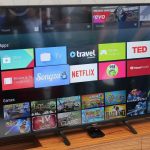 Powered by Google. The interface is clear, but rather cumbersome - it takes up the entire screen. The best smart TVs according to many ratings are equipped with this OS, since it supports all popular content services and leads in the number of available applications.
Powered by Google. The interface is clear, but rather cumbersome - it takes up the entire screen. The best smart TVs according to many ratings are equipped with this OS, since it supports all popular content services and leads in the number of available applications.
The system connects with other devices through a proprietary application or AirPlay option. By default it has a built-in option to stop broadcasting.
Tizen
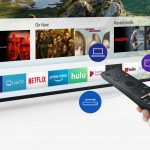 Created by Samsung. Has a minimalistic interface. Works with most well-known internet services. In older models, you can launch several windows on the screen at once. Browsing sites using the remote control is not particularly convenient and does not have a good speed.
Created by Samsung. Has a minimalistic interface. Works with most well-known internet services. In older models, you can launch several windows on the screen at once. Browsing sites using the remote control is not particularly convenient and does not have a good speed.
WebOS
 Operating system from LG. The interface is as austere as that of Tizen. For new models, voice control and control from the remote control using a gyroscope (tilting in different directions) are available. The range of applications is about the same as that of Tizen - all popular resources are available.
Operating system from LG. The interface is as austere as that of Tizen. For new models, voice control and control from the remote control using a gyroscope (tilting in different directions) are available. The range of applications is about the same as that of Tizen - all popular resources are available.
We have already covered:
How to choose a smart TV
Many buyers are guided when buying by a pair of clearly incorrect opinions:
- The first delusion: 4K is overkill, it is extremely difficult to find content in this format, overpayments are pointless... In fact, 4K is the standard for most modern TV panels, it is incorrect to call it overkill. A few years ago, companies moved away from releasing even medium-sized 1080p matrices. It turns out that now you simply cannot find a "not expensive, but good" 1080p TV. This is akin to finding a smartphone without a camera, arguing that there is no need for it. Such smartphones are simply not being made now;
- Second misconception: if you have a game console, it's better to buy a 1080p TV... The above has already indicated the reason why it is impossible to buy such a panel. The second point is that even the simplest set-top box, like the PS4 Slim, will provide an excellent HDR image on a 4K panel. The more modern the TV, the better the picture during the game. This is an axiom.
Detailed analysis of matrices: IPS, VA, OLED, QLED, Nanocell
The main types of modern TV matrices are LED and OLED. LED is divided into VA and IPS, the most expensive models of South Korean brands Samsung and LG use modified solutions, Nanocell and QLED.
The formation of a picture on the LED matrix is provided by a backlight that works over the entire area.Because of this feature of functioning, the problem of saturation of the black shade is urgent, because the illumination of dark areas is identical in intensity to light ones. Other things being equal, VA matrices provide more contrast than IPS. IPS, however, impresses with its natural shades and wide viewing angles. The lack of contrast is noticeable when viewed in the dark, in such conditions blacks really turn gray. In the light, the feature is almost invisible.
Matrix type VA - development of Samsung, in the most expensive models they are classified as QLED. “Quantum Dots” is more of a publicity stunt, but QLED is nevertheless somewhat VA. IPS - LG work area, Nanocell - upgraded version. In fact, it is identical to IPS, but there are certain advantages. Both companies use FALD illumination in their expensive models.
OLED TV panels are a separate topic. Due to the glow of the pixels themselves, additional illumination is not required. The contrast ratio is huge, comparable to plasma TVs. This, combined with the richness of the hues, makes OLED the best solution. Unfortunately, there were some drawbacks. The brightness is lower compared to the older QLED models. The problem of banding is also relevant, when darker or lighter areas are visible on a gray background. However, manufacturers are working to correct these shortcomings.
Selecting the backlight type
If we consider TVs of the middle price group, then the most important thing is to choose the right backlight for the IPS matrix, the contrast of which is initially low. The lighting circuit determines the location of the lamps:
- Edge LED... Placement of the tape along the edges or perimeter in general;
- Direct LED... Uniform placement across the display plane.
The Direct scheme is superior to Edge, as lighting is more uniform, overly lit areas are not formed, and a balanced contrast is achieved.
Separately, you need to disassemble the FALD circuit, when the diodes are distributed over the entire plane of the display, however, some areas can be turned off automatically to darken the black areas. Depending on the dynamics and shades of the scene, the effect achieved can be comparable to OLED matrices.
The FALD scheme is typical for older models of VA and IPS TV panels, it is compatible with QLED, Nanocell, VA matrices. The efficiency and quality of the circuit is determined by the number of backlight zones involved, the more such zones, the better the TV is. The most budget solution is 48 zones, in older versions there are several hundred.
What is HDR
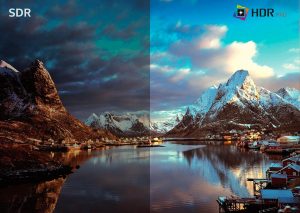 The “magical” HDR effect is attributed to the maximum peak brightness values, which can be up to 100 nits. This increases the contrast, expands the range of displayed shades. To display movies or broadcasts properly in HDR, the TV must have sufficient brightness and a 10-bit matrix. The HDR formats are as follows:
The “magical” HDR effect is attributed to the maximum peak brightness values, which can be up to 100 nits. This increases the contrast, expands the range of displayed shades. To display movies or broadcasts properly in HDR, the TV must have sufficient brightness and a 10-bit matrix. The HDR formats are as follows:
- HDR10 - standard, most common format;
- HDR Pro - a development from LG, denoting HDR with metadata;
- HDR10 + - development of Philips and Samsung, comparable to Dolby Vision;
- Dolby Vision - a proprietary format based on 10 and 12 bit metadata. The use of the format is paid; it is used by online streaming services and large film companies.
There are other formats, but in general it is not that important. It's hard to tell the difference between them. First of all, you need to be guided not by formats, but by the quality of the matrix, its ability to correctly display a large number of shades.
RGBW and WRGB: What's the Difference
RGBW - a class of LED matrix in inexpensive 4K TV panels from LG. The difference from standard designs is the addition of a white subpixel to the three main ones. In theory, this should help in increasing the brightness. In practice, however, the development turned out to be sheer nonsense and nonsense. The reason is that the dimensions of the subpixels have not changed when compared with the regular versions, and the horizontal resolution has only become lower.
WRGB - a similar technique, but relevant for OLED matrices. The dimensions of the subpixels have been slightly reduced, due to which the indicators for clarity and resolution have been preserved. It turns out that RGBW is not the best buy, but WRGB is a decent choice, better than standard OLED.
Bitness and color depth
The color depth is now represented by a couple of options. The first is 8 bit SDR, the second is 10 HDR. What do these numbers mean? 8 bits - their number allocated for the tone in the subpixel. It turns out that a whole pixel consisting of three subpixels is already 24 bits. In Windows OS, this designation was previously adopted, 24 bits, sometimes 32, which is obtained by adding an alpha channel, however, it does not increase the number of displayed shades. The modern version of Windows 10 designates the color depth per subpixel as 8 or 10 bits, you won't get confused.
Someone might say that the human eye can only see 10 million tones, so there is no difference between 8 bits with their 16 million colors and 10 with a billion. In fact, it is, because 10 bits differs in a set of information not only about the hue, but also about its brightness.
10 bit or 8 with FRC
Only a 10-bit sensor can handle HDR format. This is an axiom. Compliance with the 10-bit standard can be both “fair” and more “tricky” when only 8 bits are fully displayed, and intermediate tones are formed by flickering. It would seem that the choice is obvious, in favor of "honesty", but practical tests show that the 8 + FRC option is not inferior to 10-bit models, which for this reason Samsung even stopped producing.
Frequency: 60 or 120
120 is better, but not always. The difference is really noticeable when showing long panoramic scenes in a movie. Why? The standard of cinematography is 24 frames per second, dividing them by 60 hertz does not exactly work, but by 120 it is quite. 120 hertz is more suitable for games, however, subject to a number of conditions:
- Resolution - 1080p or 4K SDR with activated downsampling;
- Connection method - HDMI 2.0 cable.
Which HDMI is better
The older the format, the higher its bandwidth. For example, for HDMI 1.0 it is only 4.9 gigabits per second, for 2.1 - 48. Of course, to achieve such values, all circuit devices, cable, transmitter (set-top box, laptop), TV panel must comply with the format. The current versions of the set-top boxes use the following HDMI versions:
- PS 4 Fat / Slim, Xbox One, Switch - 1.4b;
- PS 4 Pro, Xbox One S - 2.0a;
- Xbox One X - 2.0b;
- PS 5, Xbox Series X - 2.1.
Letters can be ignored, the bandwidth does not depend on them. PS4, despite its low HDMI version, easily copes with HDR image output.
Top TV manufacturers
- Sony. A Japanese brand with a wide variety of diagonals and many of its own developments in terms of improving image quality. Modern models are equipped with the Android operating system. Among other advantages - a stylish thoughtful design.
- Samsung. A super popular brand with a huge range of models for any preferences and needs. High image quality is supported by OLED technology and other proprietary solutions. Smart models run on fast and easy-to-manage Tizen platforms.
- LG. Another widespread South Korean brand that produces high-quality and affordable equipment. The models are distinguished by a picture of high realism and good viewing angles. Smart TV runs on one of the most convenient and multifunctional webOS platforms.
- Philips. A reliable brand with an ideal price-performance ratio. Highly natural and clear images are provided by the signature Ambilight. Smart TV options on Saphi OS are not the most advanced and faster, more functional and convenient Android models.
- TCL. An alternative Chinese brand of inexpensive, but modern and high-quality technology. Most models provide a realistic high resolution picture. The Smart-line is equipped with Android-based operating systems.
- Hyundai. Korean manufacturer producing models with average picture and sound parameters. For Smart equipment, strictly Android platforms are used. The advantages of these TVs are a diverse range of models, nice design, and the use of Bluetooth remotes.
Best 32 inch smart TVs
LG 32LM6350 32 ″ (2019)

Stylish, compact, smart LG TV with Full HD resolution and webOS operating system. The 4-core processor creates a picture of high detail, with excellent color reproduction, and Dolby Audio technology provides a surround "rich" sound with the effect of complete immersion in what is happening on the screen. The 32LM6350 model does not require additional set-top boxes or digital TV cables - it already has 30 free channels automatically "embedded", and with an inexpensive paid subscription, access to more than 200 channels is opened. You can now manage all content from one remote control. The auto power off option puts the TV into sleep mode if it has not executed any commands for 2 hours.
Features:
- there is a voice control with the ability to receive recommendations for viewing;
- there is an HDMI 1.4 port;
- the set includes the "Magiс Remote" remote control, which provides access to advanced functionality.
Samsung UE32T5300AU 32 ″ (2020)
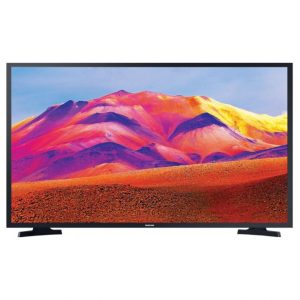
High quality and multifunctional smart TV for home use. Full HD picture, thanks to HDR and PureColor technologies, it is very realistic and rich, with natural color reproduction. The Tizen operating system provides access to essential applications and Internet resources. Smart TV supports AirPlay option and can be controlled from smartphones and other Apple devices.
Features:
- according to user reviews, the sound does not differ in depth and clarity;
- there is no universal remote control in the kit, the “native” one is not the most convenient to operate;
- good viewing angles.
LG 32LK6190 32 ″ (2018)
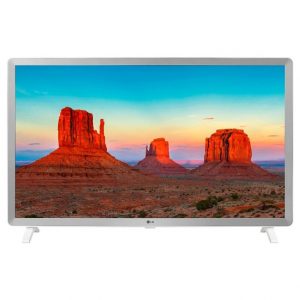
Decent budget smart model with Full HD screen and webOS operating system. High quality and realistic pictures are provided by Dynamic Color and Active HDR technologies, as well as Direct LED backlighting. Smart TV with an intuitive interface does an excellent job of showing any Internet content. The TV can be controlled via the LG TV Plus smartphone app. The model is also distinguished by very wide viewing angles (178 ° horizontally and vertically).
Features:
- the model is made in a stylish white case;
- the TV screen can be used as a remote display for a smartphone or tablet.
Hyundai H-LED32ES5108 32 ″ (2019)
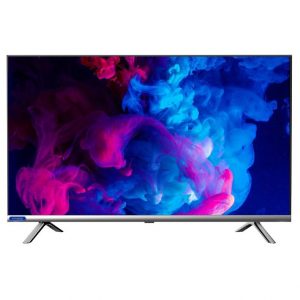
Compact and functional representative of the budget segment. The screen resolution is sufficient to view HD quality TV content. The image is quite saturated thanks to good color reproduction. With the Android 9 operating system, users have access to a huge amount of content from most of the popular Internet services. You can also display information from smartphones and other devices on the screen.
Features:
- the image quality suffers somewhat from uneven backlighting, the lack of an anti-reflective coating and the inability to regulate the color temperature;
- the TV can be used for games (2d and some 3d projects are launched).
HARPER 32R6750TS 32 ″ (2019)
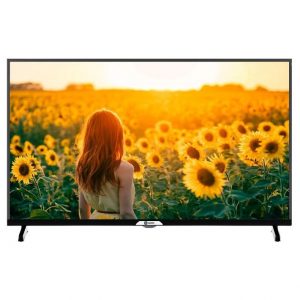
Inexpensive model with smart TV with basic functionality for home use. The picture quality is good, the TV is designed for content up to 720p HD (1366 × 768). Surround sound. Smart TV on Android 7 quite easily "copes" with popular Internet resources. It is possible to connect a keyboard and mouse to control the functions of the device.
Features:
- according to user reviews, managing Smart applications is inconvenient, the interface is slow;
- wide viewing angles (declared by the manufacturer - 178 °).
The best 43-inch smart TVs
QLED Samsung QE43Q67TAU 43 ″ (2020)
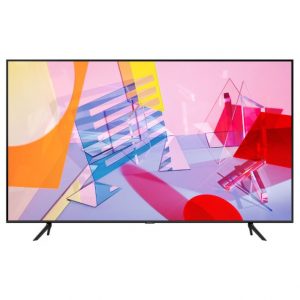
Excellent QLED TV with Smart TV from Samsung with a diagonal of 109 cm, absolutely realistic images and a good set of additional options. Screen resolution - 4K (Ultra HD). Thanks to Quantum HDR technology, the picture on the screen is bright, contrasting (up to 7000: 1) and saturated. Screen frequency 100 Hz.
Tizen 5.5 operating system supports all major resources and applications for Smart TV. Multi View mode divides the screen into two parts and allows you to view TV content and content from your smartphone at the same time. With the Ambient interior mode, the TV can adjust to the decor of the walls in the room, display useful information, favorite photos and images, etc.
Features:
- from the SmartThings panel you can control devices of the "smart" home system;
- remote control - with functions of universal, convenient and easy to operate;
- stylish design, frameless on 3 sides.
Samsung UE43TU8510U 43 ″ (2020)
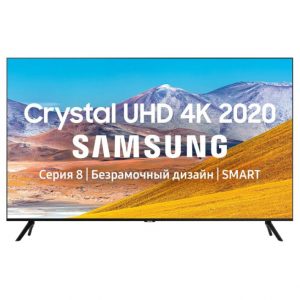
A powerful and full-featured TV from a famous brand. Unlike the previous model, it does not use QLED technology, but the display and Crystal processor provide excellent image quality. Thanks to them, you can watch TV content in HDR and 4K quality. The Smart Hub platform on Tizen 5.5 is responsible for "smart" TV, providing quick access to your favorite content.
Features:
- with a universal remote control, you can control all smart devices in the house;
- as in the QE43Q67TAU model, there is an interior Ambient mode for displaying your favorite pictures.
NanoCell LG 43NANO796NF 43 (2020)

A high-quality smart TV with a good picture and a wide range of options. The image quality is close to real, you can view content up to 4K. The sound is clear and spacious, Ultra Surround, sufficient for home use. Smart TV on webOS 5.1 provides access to numerous applications, media libraries and other Internet resources.
Features:
- according to user reviews, some models have small flares at the edges;
TCL L43P8MUS
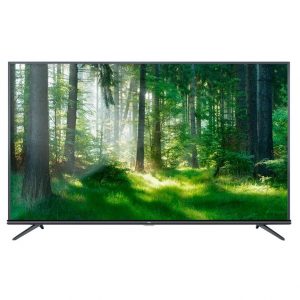
A good model from the budget price segment. Excellent brightness and color reproduction allow you to view HDR and 4K content. Smart TV on Android allows you to use all common Internet resources. Supports "ChromeCast" option for sending content from smartphones and tablets to the TV screen. There is a voice search option. The TV can also be integrated into a smart home system.
Features:
- the viewing angles are rather limited;
- strong metal body with a thin bezel.
LG 43LM5700
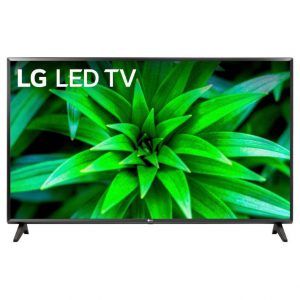
A high-quality model from an inexpensive segment for home watching TV and Internet content. The screen resolution, unlike the previous model, is only Full HD. Dynamic color enhancer and Active HDR mode make the image realistic, rich, "rich". The sound is surround and clear, Dolby Audio technology is responsible for it. The webOS operating system allows you to enjoy all the benefits of Smart TV. Applications work quickly, branded provides access to a large number of channels.
Features:
- the remote control, like the previous model, is inconvenient. It is more comfortable to use the application or buy Magic Remote;
- limited viewing angles.
The best 50 inch smart TVs
QLED Samsung QE50Q80TAU 50 ″ (2020)
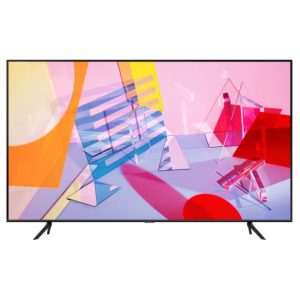
Stylish and modern model with great content visuals. Quantum dot technology and dual FALD illumination provide absolutely realistic picture quality. The Smart Hub platform collects all your favorite content in one place and provides convenient and quick access to it.
In Multi View mode, you can view both TV content and information from the smartphone screen at the same time.
Features:
- the option of voice control is provided;
- the model is made in an elegant frameless (3 sides) case.
Sony KD-49XH8096 48.5 ″ (2020)
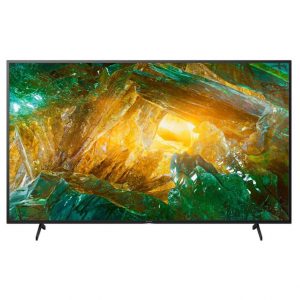
An excellent smart TV with an almost perfect ratio of quality and price. Screen resolution - 4K (Ultra HD). The model is suitable not only for watching TV and Internet content, but also for games, as it has a minimum input lag. The Android operating system provides access to a huge amount of applications, videos and other content. It is easy to operate, fast and accurate.
Features:
- the model supports AirPlay technology, which allows you to connect other smart devices to the TV;
- stylish design with thin bezels.
NanoCell LG 49NANO866 49 ″ (2020)
Multifunctional smart TV, excellent picture and good sound. NanoCell technology ensures high color fidelity while maintaining color purity and saturation. The operating system webOS 5.5 with an improved menu makes using your favorite services even more convenient: it provides access to 4K and HDR content, gives recommendations for viewing, and organizes information already used. Home Dashboard allows you to control your smart home systems from your TV screen.
Features:
- in low light, the contrast of the image decreases, dark colors become grayish;
- the model has very wide viewing angles.
Samsung UE50TU8510U 50 ″ (2020)
Another smart 4K TV for home cinema marathons and relaxing with your favorite games. With Edge LED backlighting, the picture on the screen is immersive. Smart-TV based on Tizen 5.5 provides access to most popular Internet services. Screen frequency 120 Hz.
Features:
- in bright daylight, the image does not look faded;
- according to user reviews, Smart-TV has the most understandable menu that you don't have to get used to.
55 inch smart TV rating
QLED Samsung QE55Q95TAU 55 ″ (2020)
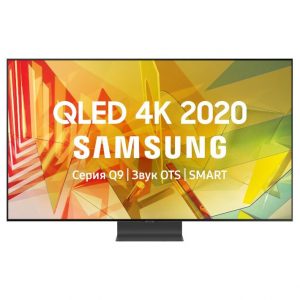
Ultra-modern widescreen TV for viewing content of any level, including 4K. The powerful Quantum 4K processor and quantum dot technology are responsible for optimal picture quality. Thanks to the adaptive mode, the picture automatically adjusts to any lighting. Smart TV on Tizen provides fast and convenient access to a variety of Internet content.
Features:
- improved game mode Real Game Enhancer +;
- the design of the model is minimalistic, frameless on 4 sides;
- from the screen you can control smart home systems.
Sony KD-55AG9

Great TV with support for any type and quality of content. The image has a rich color palette, detail and realism. The sound quality is one of the best in the segment. The Android TV operating system is simple, manageable and supports a huge list of additional resources. Content is available in most formats, including 4K and Dolby Vision HDR support.
Features:
- the picture is slightly less energetic than the previous model;
- Apple TV app not supported.
LG 55NANO906

New model with wide screen and premium picture quality.Pixel Compensation brings colors to life even more vividly and vividly than the brand's earlier models. WebOS operating system with Air Play 2 option supports all Smart TV options plus provides more convenient preview and contextual search. With the "Home Dashboard" option, you can customize your smart home from the TV screen.
Features:
- you can display content from smartphones and tablets;
- the sound is good, spacious, but to watch content with dynamic, rumbling accompaniment, it is worth buying a subwoofer.




